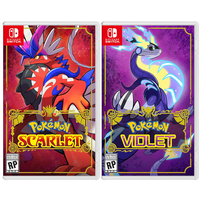10 Pokémon that resemble bizarre real-life animals
It's time to "match 'em all."
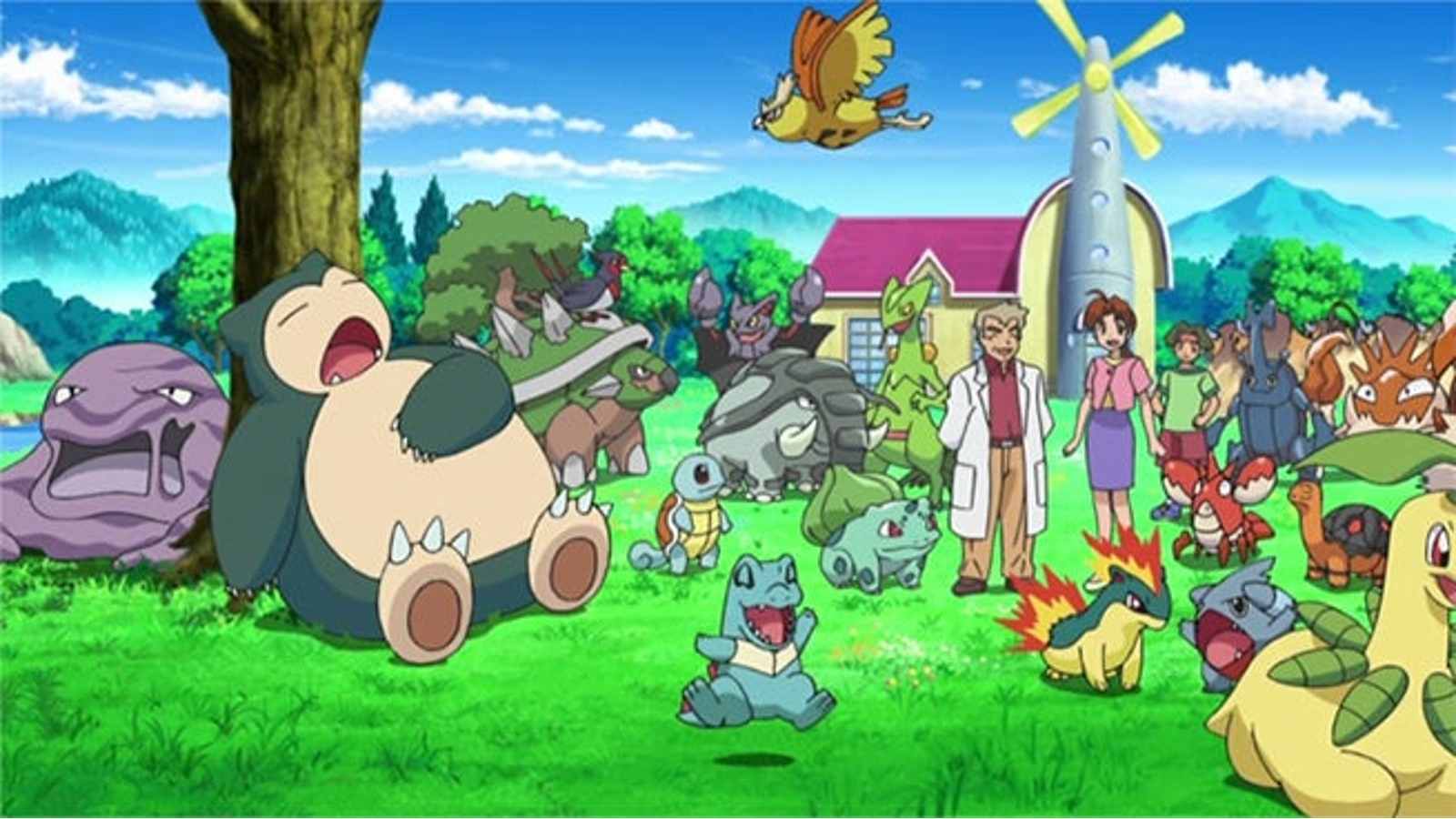
Pokémon, or "Pocket Monsters," are the stars of the hugely popular franchise of the same name that spans video games, trading cards, TV shows, movies and toys. What makes these fictional creatures so appealing to so many people is, in part, their uncanny resemblance to real-world animals.
For example, the most famous Pokémon, Pikachu, is an electric-type mouse that is inspired partly by Pikas — a group of small mountain-dwelling mammals found in Asia and North America, Live Science previously reported.
It doesn't take a genius to identify the inspiration for most Pokémon. For example, Rattata is obviously a rat, Pidove is a pigeon and Ekans is definitely a snake (Ekans is even "snake" spelled backward). Sometimes the link is more obscure: Donphan is probably based on an elephant and Tentacruel resembles a jellyfish. And some Pokémon appear to be based on animals so obscure that some people probably have no idea they actually exist in real life. From Sandshrew to Shellos, here are some of our favorite Pokémon characters and their secret animal doppelgängers.
Related: 13 extremely strange animal feet
Sandshrew is a pangolin
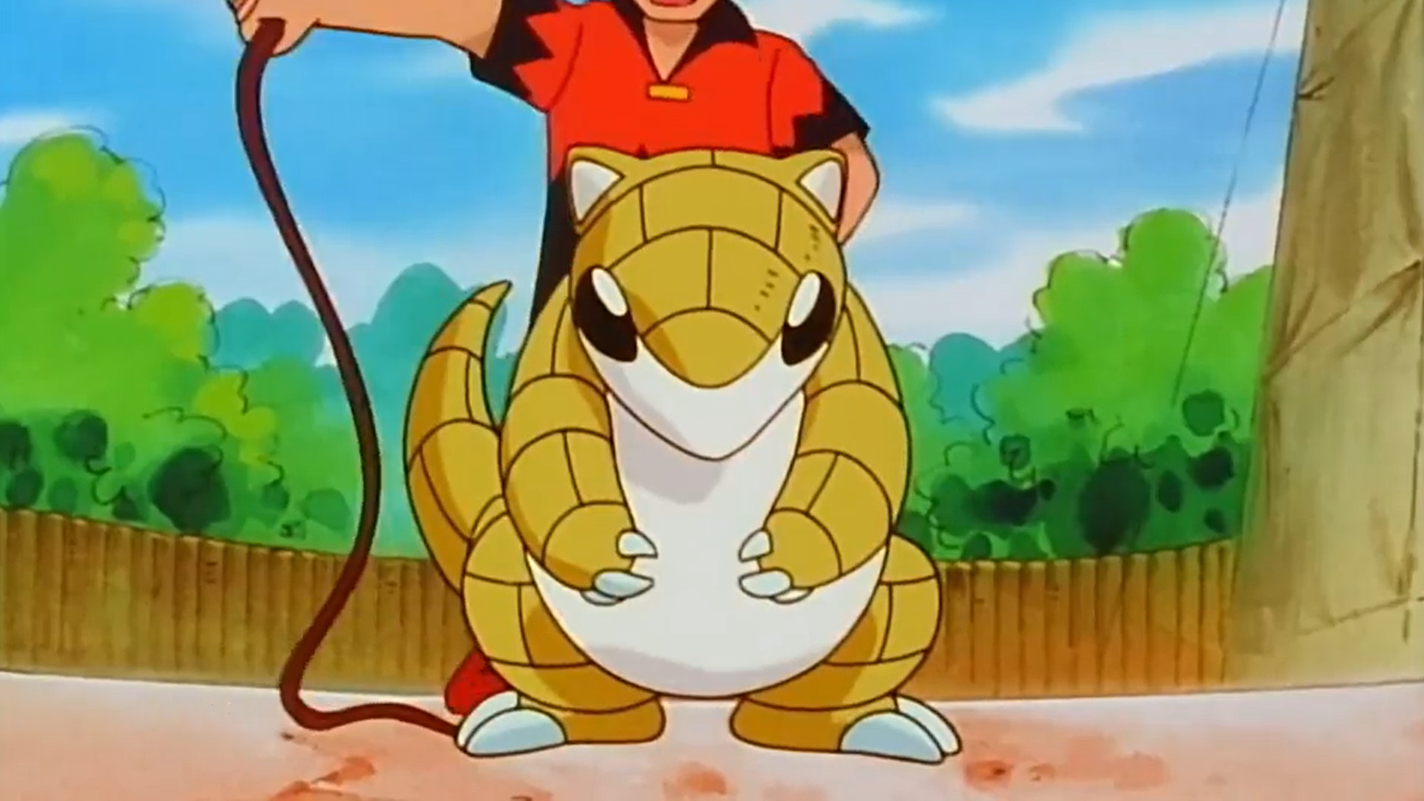
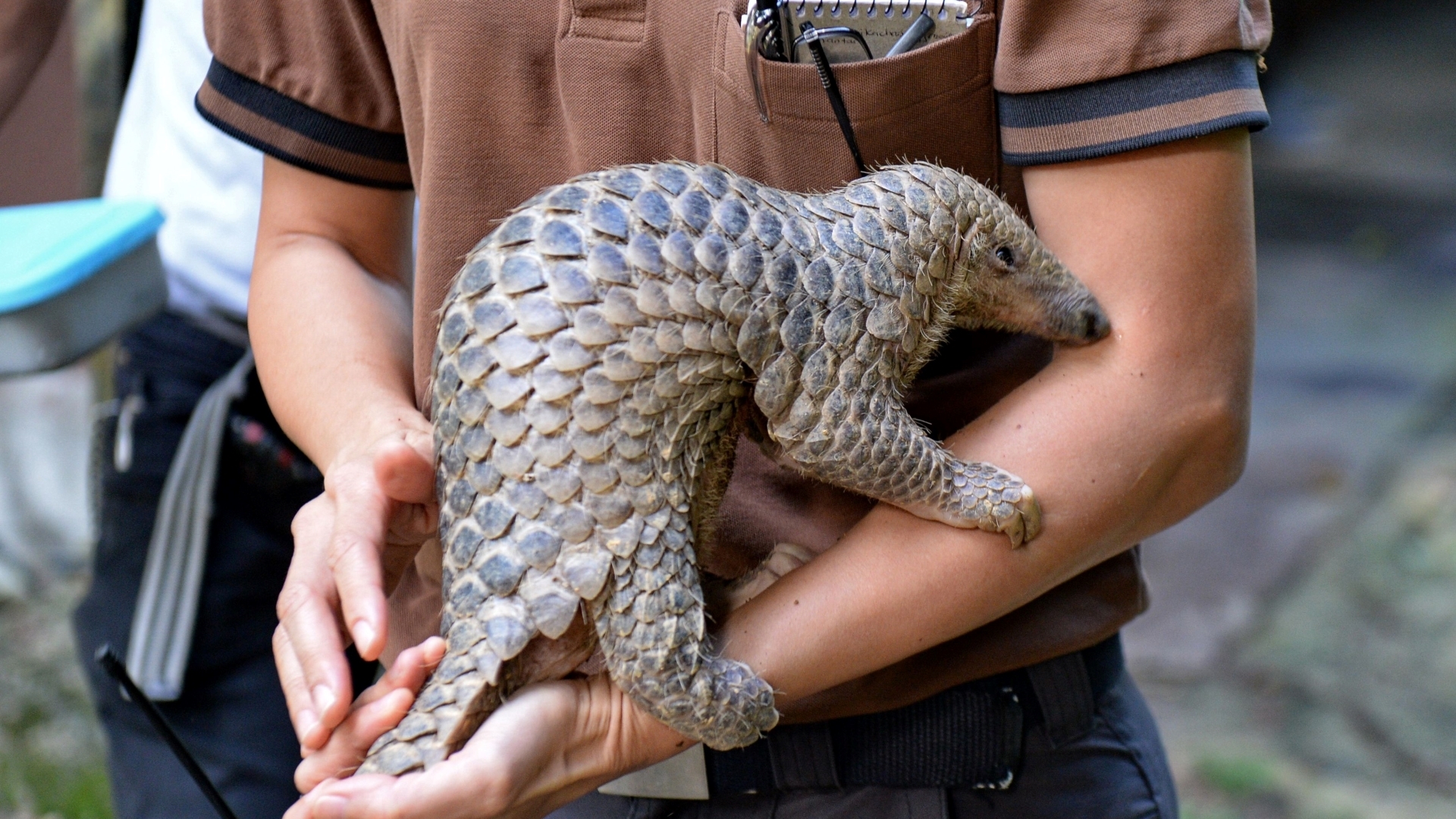
Kicking off this list is Sandshrew, one of the original 151 Pokémon introduced in the Generation I games Red and Blue. While the name is made up of the words "sand" and "shrew" and comes under the mouse category of Pokémon, Sandshew looks more like a pangolin or an armadillo, both of which can curl up into a ball like Sandshrew in the "Pokémon" TV series. However, it most resembles the Sunda pangolin (Manis javanica).
Singapore Zoo took in a rescued 6-week-old Sunda pangolin in 2017 and nicknamed it "Sandshrew" because of the similarities between this animal and the Pokémon. Sunda pangolins are among the most trafficked mammals on Earth. Killed for their meat and scales, the International Union for Conservation of Nature (IUCN) lists the species as critically endangered, with an extremely high risk of extinction. The real-life Sandshrew was safely returned to the wild in 2018 and was tracked as part of pangolin conservation efforts, according to The Straits Times, a newspaper in Singapore.
Sandshrew the Pokémon, meanwhile, appears in Season 1, Episode 6: "Clefairy and the Moon Stone," among others.
Relicanth is a coelacanth
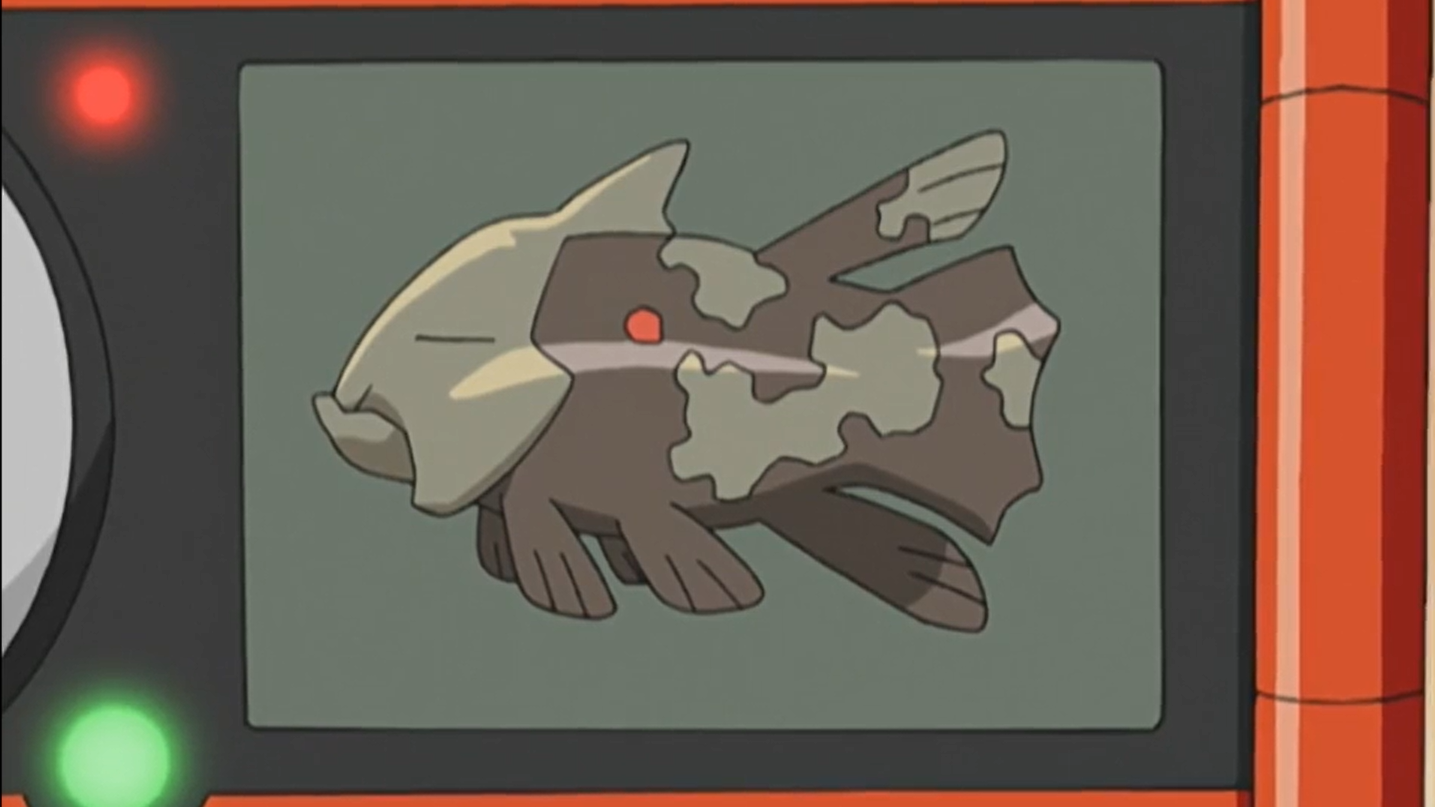
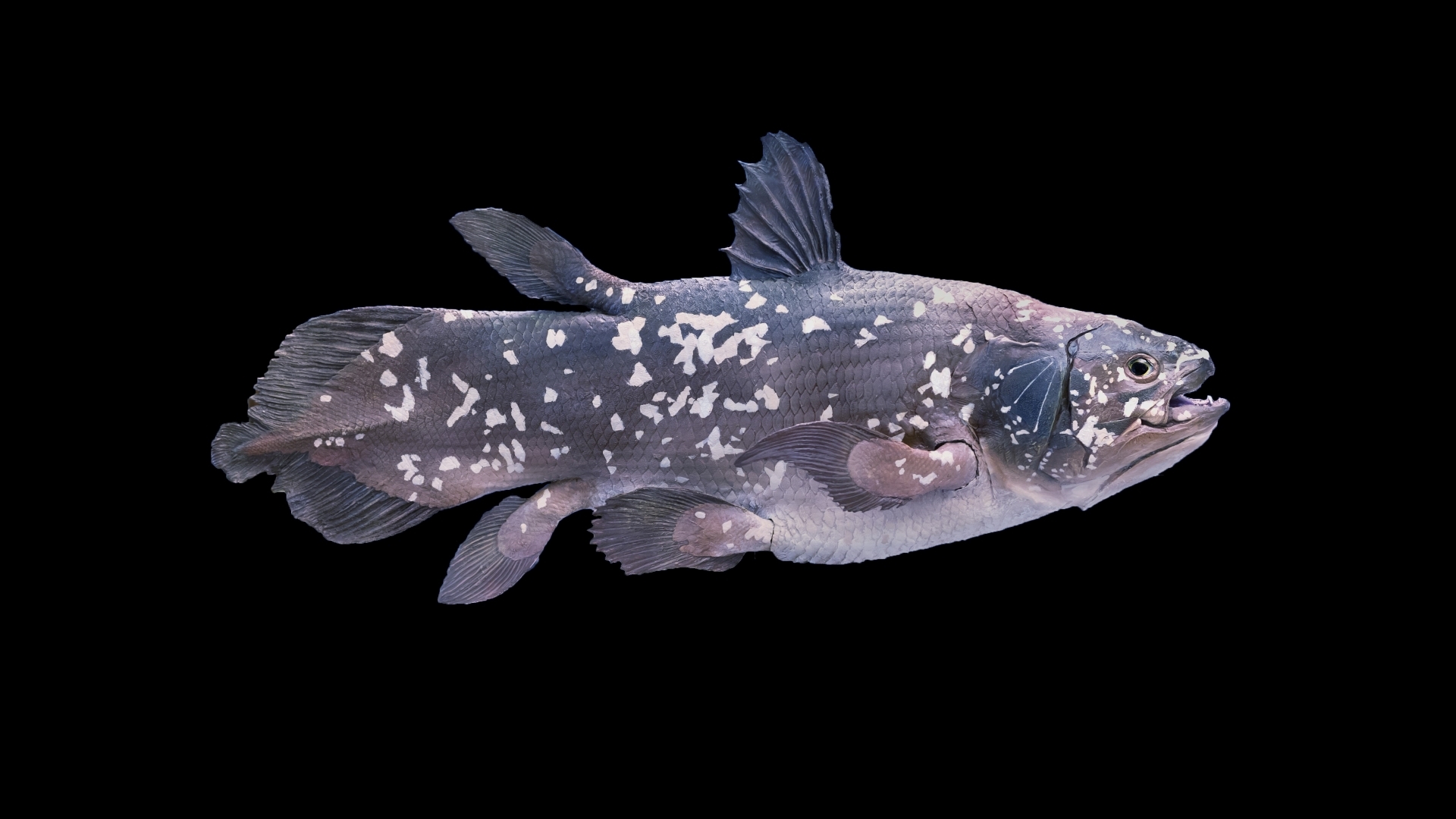
Relicanth is a dual water- and rock-type Pokémon that first appeared in the Generation III games Ruby and Sapphire. The mixed typing of this Pokémon is fitting given the history of their real-life counterparts, coelacanths.
Coelacanths are an ancient group of fish that date back hundreds of millions of years in the geological record and are often described as "living fossils," because their body shape has barely changed over millions of years. Researchers began finding coelacanth fossils in the 1800s and believed these fish were extinct until an angler caught a live one off the coast of South Africa in 1938, Live Science previously reported.
Relicanth has a similar story page on the Pokémon website, which states, "This Pokémon was discovered during deep-sea exploration. Its appearance hasn't changed in 100,000,000 years, so is called a living fossil."
Relicanth first starred in Season 6, Episode 2: "A Ruin with a View."
Caterpie is a swallowtail caterpillar
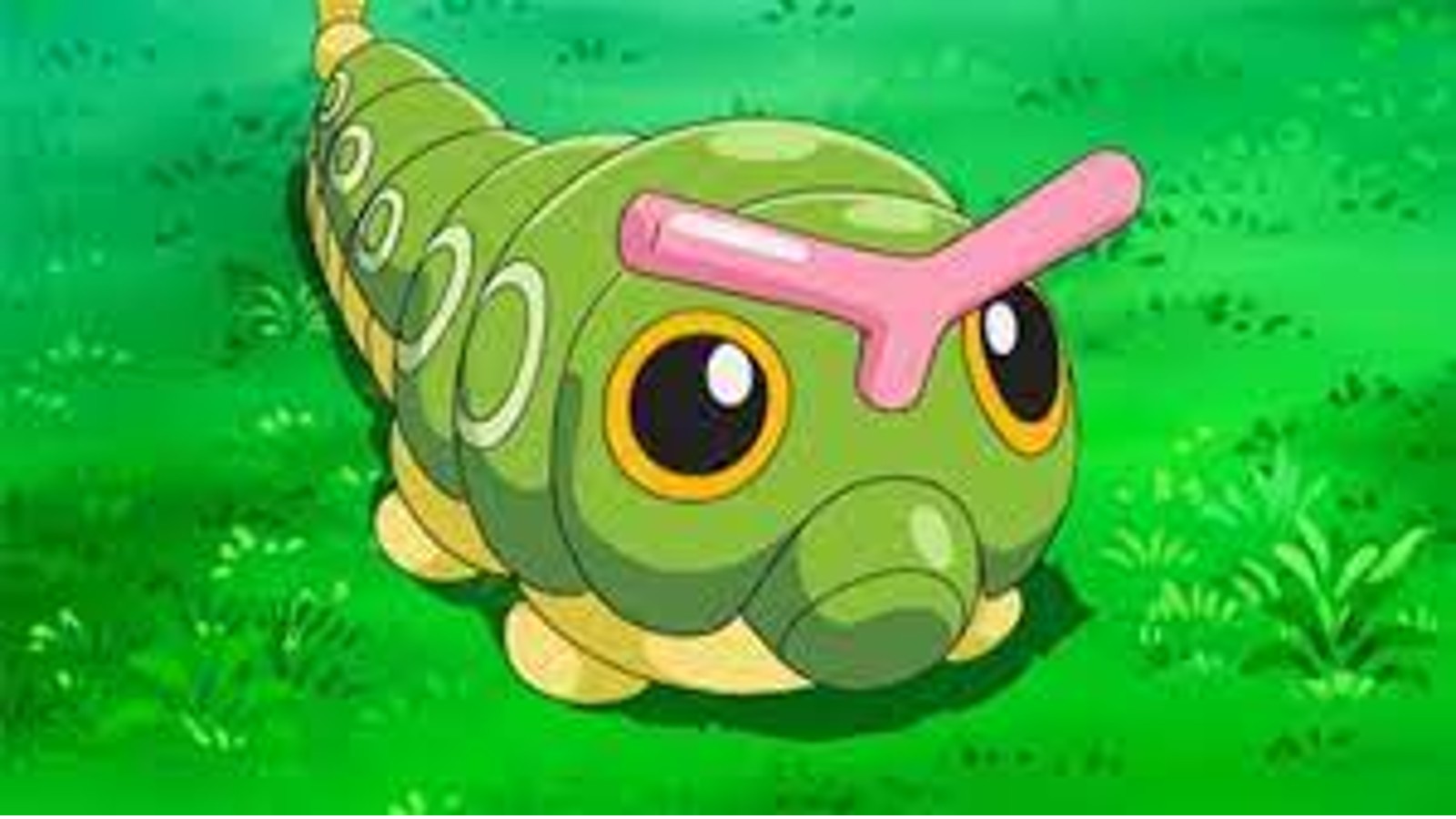
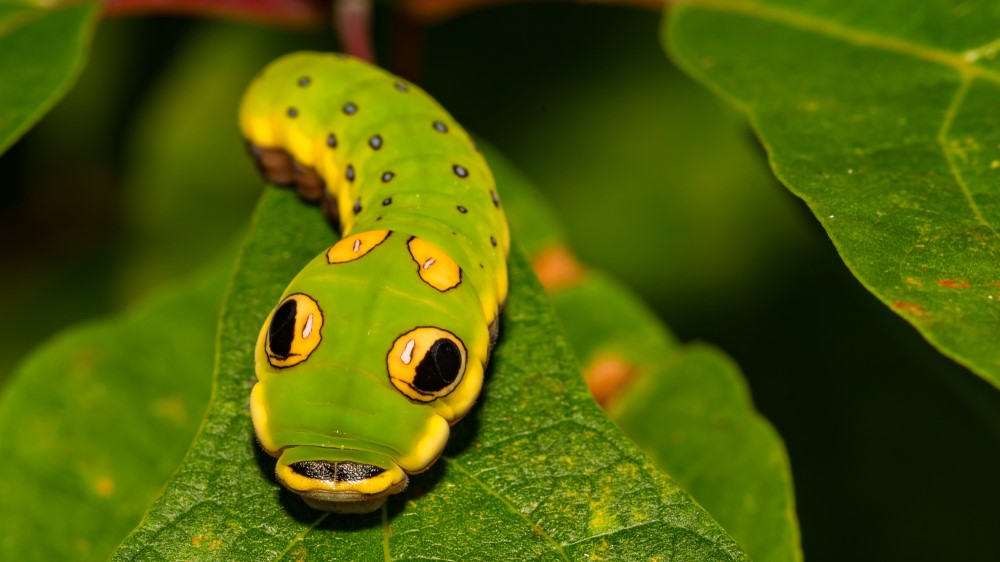
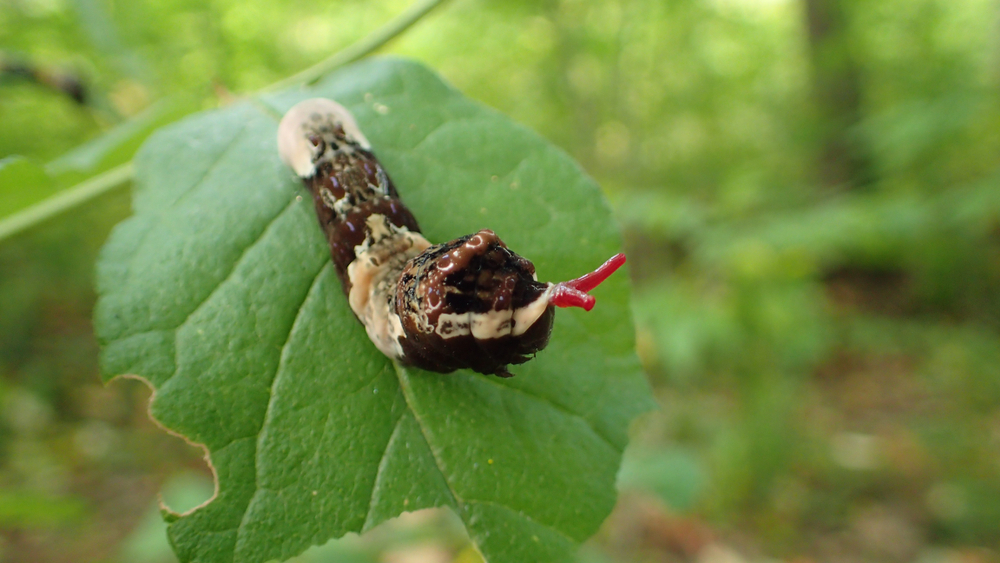
Caterpie is a bug-type Pokémon that was also one of the original 151 entries in the franchise and one of the first Pokémon caught by protagonist Ash Ketchum in the first series of the TV show, which debuted in 1997. To most people, Caterpie might seem like an odd pick for this list because it is obviously based on a caterpillar, as its name so clearly suggests. However, the adorable green insect are likely based directly on the caterpillars of several swallowtail butterflies — a group of more than 500 tropical butterflies from the family Papilionidae — particularly the Asian swallowtail (Papilio xuthus), spicebush swallowtail (Papilio troilus) and eastern tiger swallowtail (Papilio glaucus).
The most remarkable similarity between Caterpie and the swallowtail caterpillars is its body shape; Caterpie looks to have a cartoonishly large head, but the swallowtail caterpillars have a similarly massive noggin. Like Caterpie, swallowtail caterpillars have eye spots, or eye-like rings that are used to scare off birds.
The strange, fork-shaped protrusion, known as an osmeterium, on Caterpie's head is also found on the real-life caterpillars. The osmeterium is a defensive organ found only in swallowtail larvae, which can emit a foul odor that repels small insects and spiders. Caterpie's head fork has a remarkably similar function that it uses to "drive away enemies," according to the Pokémon website.
Caterpie's evolutions, or the Pokémon it transforms into, also mimic the metamorphosis of caterpillars into butterflies: Caterpie evolves into Metapod, a living cocoon similar to those created by caterpillars, before quickly evolving into Butterfree, which is most definitely a butterfly. However, in an unusual twist, Butterfree is most likely based on a black-veined white butterfly (Aporia crataegi) from the distantly related family Pieridae.
Dragalge is a leafy seadragon
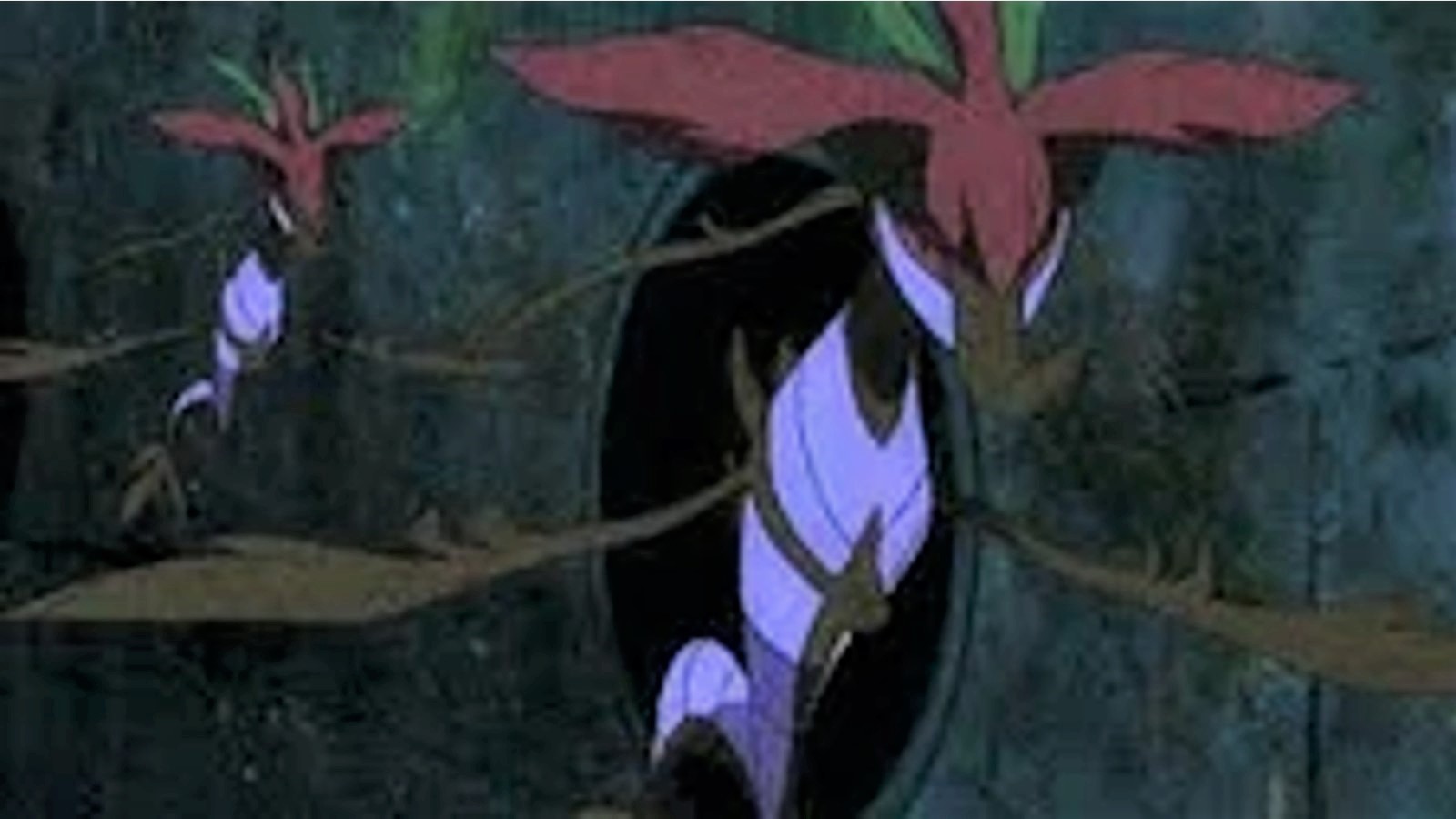
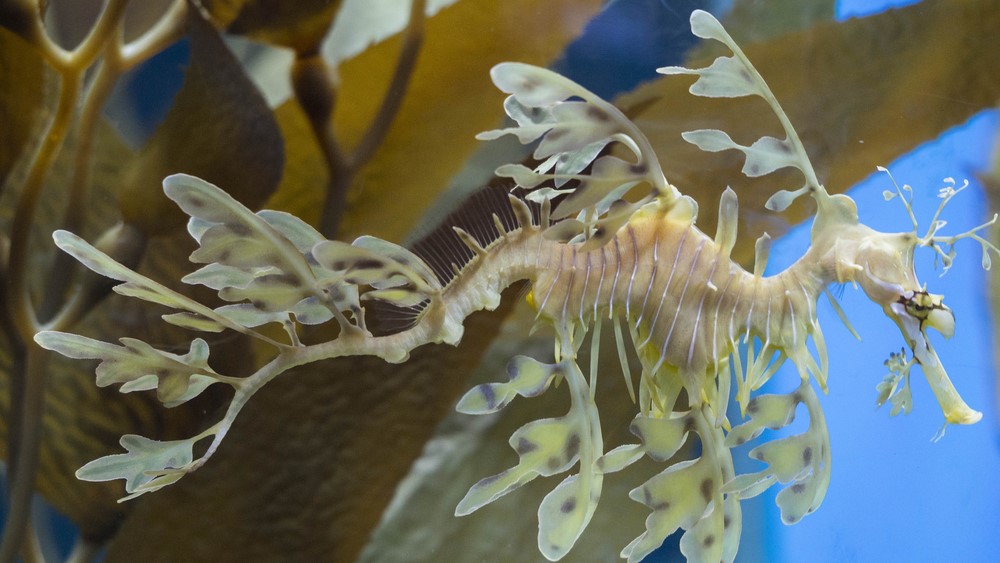
Dragalge is a dragon- and poison-type Pokémon that was first introduced in the Generation VI games, Pokémon X and Y. Both Dragalge and its pre-evolution form, Skrelp, are likely based on the leafy seadragon (Phycodurus eques), a marine fish in the family Syngnathidae, which also includes pipefish and seahorses.
Leafy seadragons are found along the western and eastern coasts of Australia and are named after the leafy protrusions found across their bodies. These protrusions are actually flaps of skin and are used exclusively for camouflage, to make them look like pieces of floating seaweed.
Unlike Dragalge, leafy seadragons are not poisonous. In the games, it is revealed that Dragalge's poisonous nature is due to the Pokémon's diet of "toxic," rotten kelp. This could be a reference to an ongoing problem in the Caribbean, where unusually large blooms of seaweed from the genus Sargassum float onto the shore and release a foul-smelling gas, hydrogen sulfide. A 2021 study found that prolonged exposure to hydrogen sulfide can make local residents feel very unwell. However, leafy seadragons actually eat small crustaceans and fish larvae that they suck up through their long snouts and not seaweed.
Dewpider is a diving bell spider
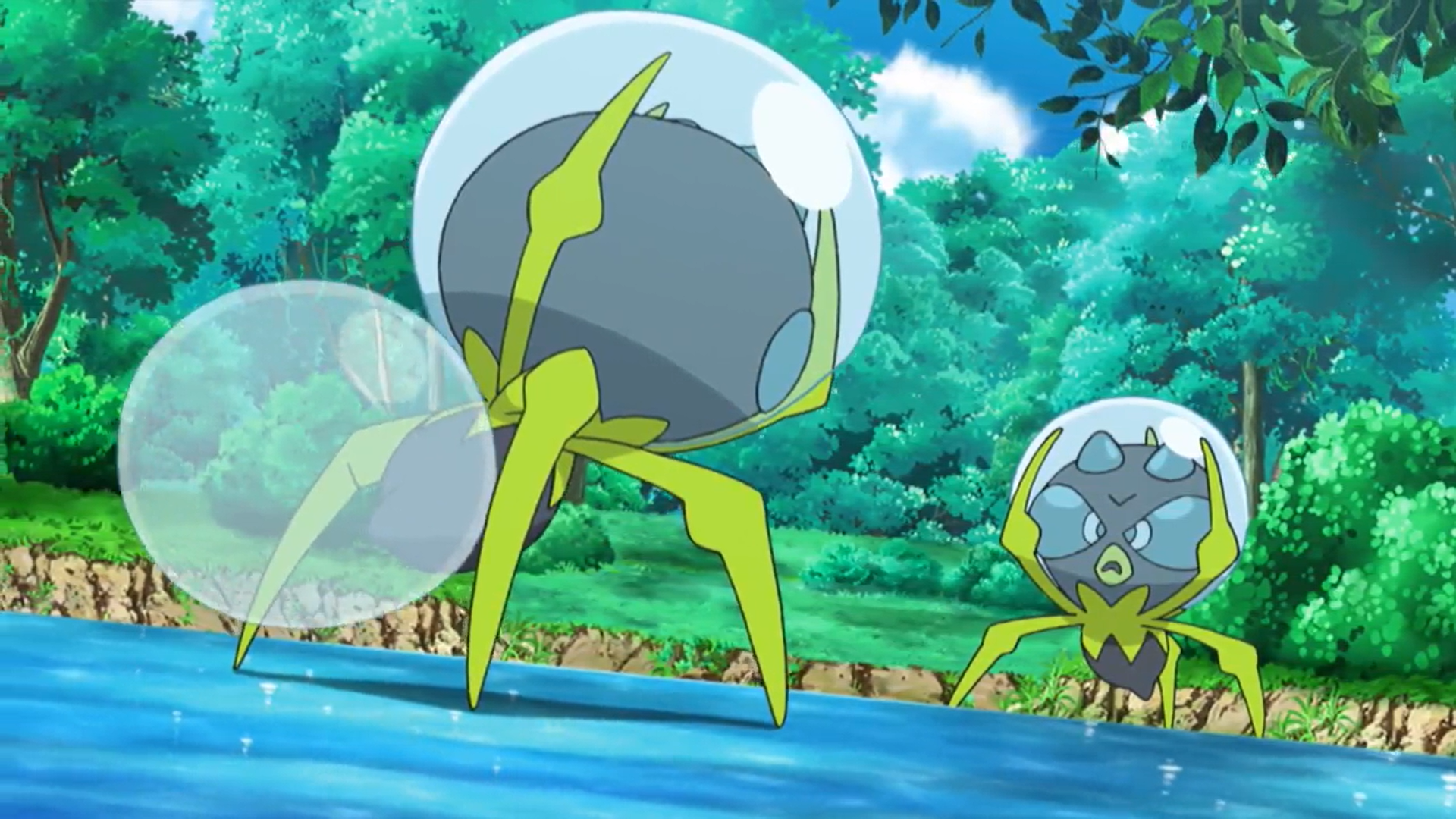
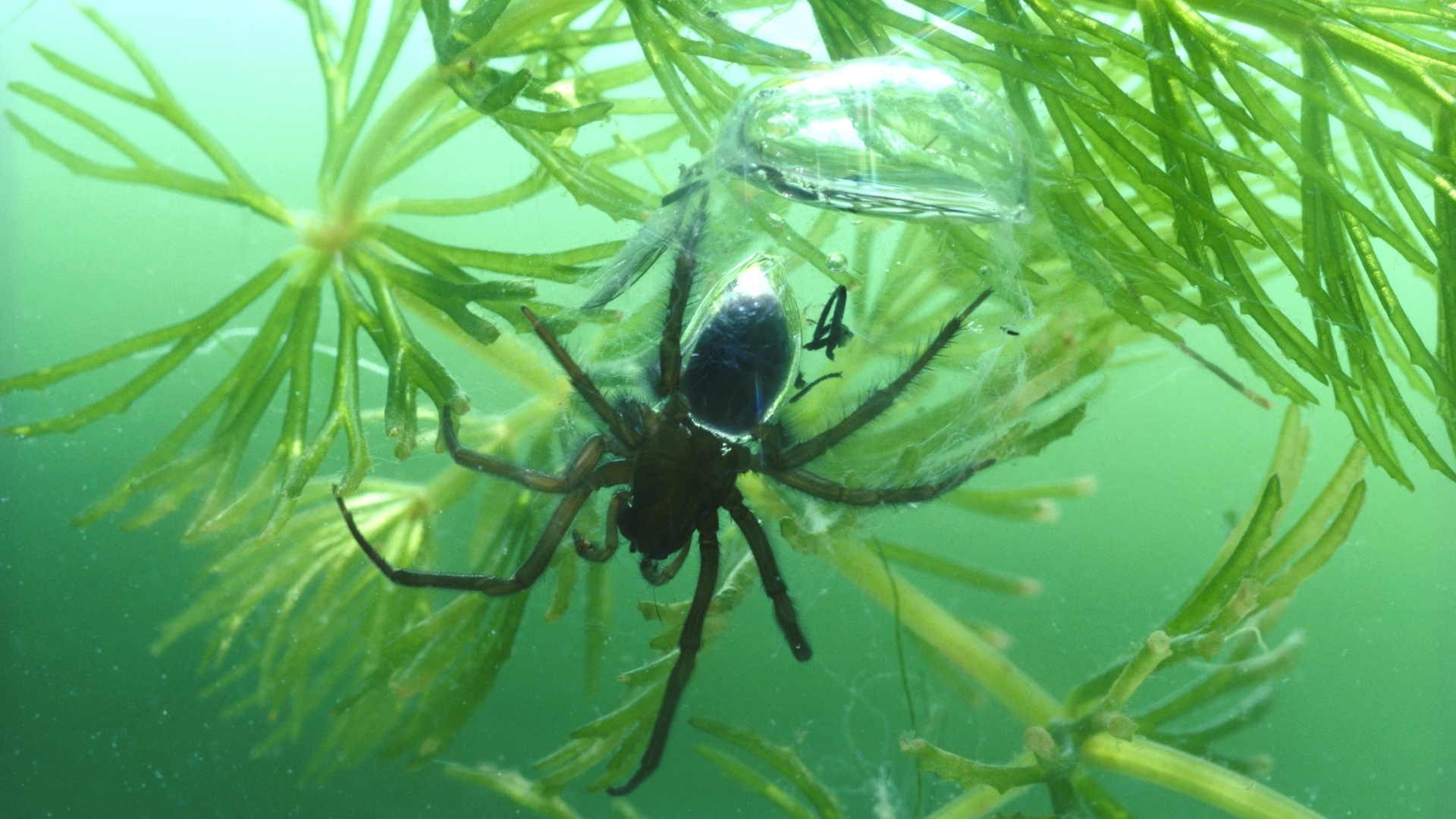
Dewpider and its evolutionary form, Araquanid, have a neat trick that's mirrored in nature: The water- and bug-type Pokémon use water bubbles to survive and battle on land. "Dewpider normally lives underwater. When it comes onto land in search of food, it takes water with it in the form of a bubble on its head," according to the Pokémon website.
Diving bell spiders (Argyroneta aquatica) use a similar strategy, but with one key feature reversed: The real-life arachnids spend almost all of their lives underwater using air bubbles replenished from the surface to breathe, like eight-legged scuba divers, Live Science previously reported.
Araquanid and Dewpider debuted in the Generation VII games Pokémon Sun and Moon and feature heavily in Season 21, Episode 27: "Dewpider Ascending!"
Corsola is a staghorn coral colony
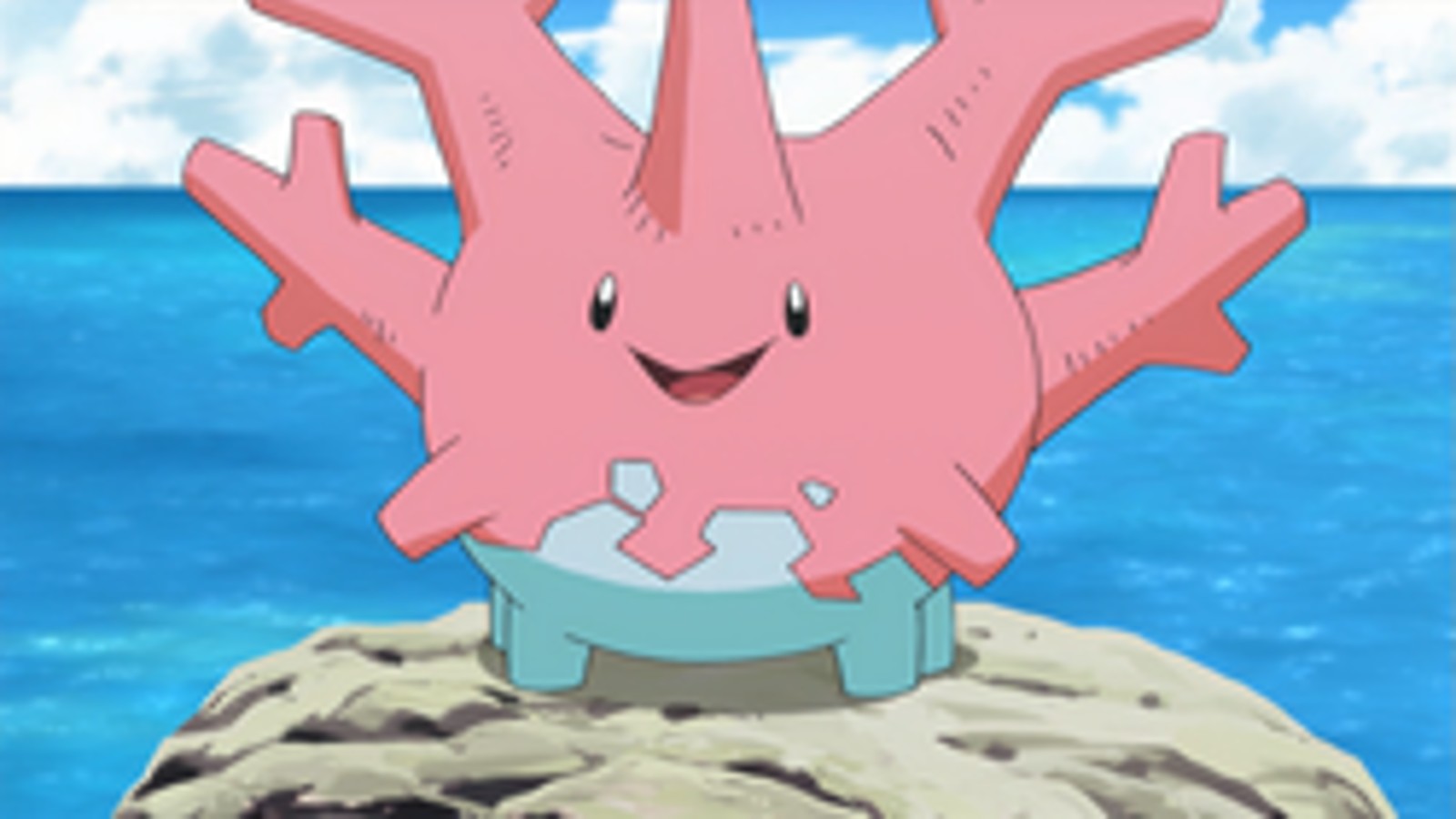
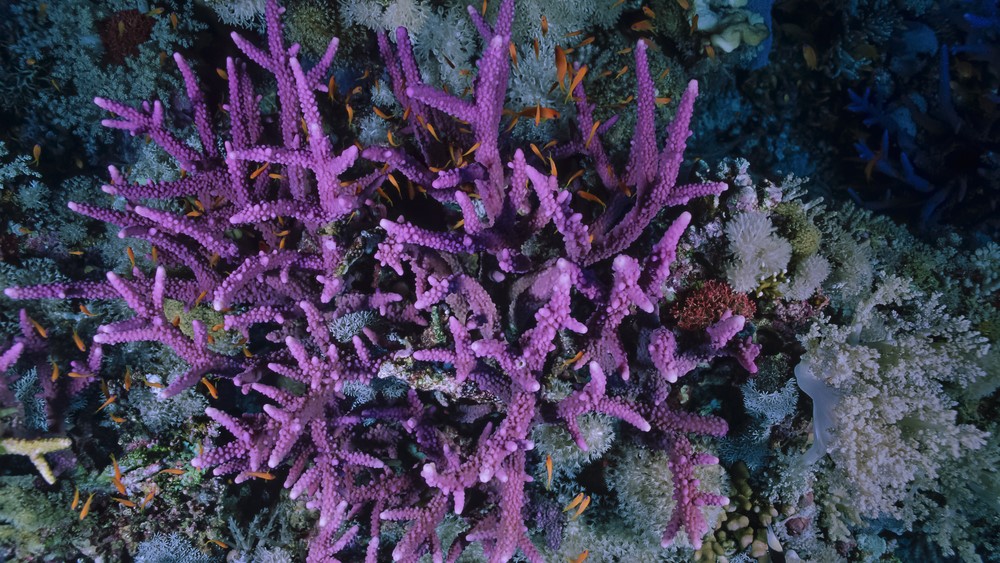
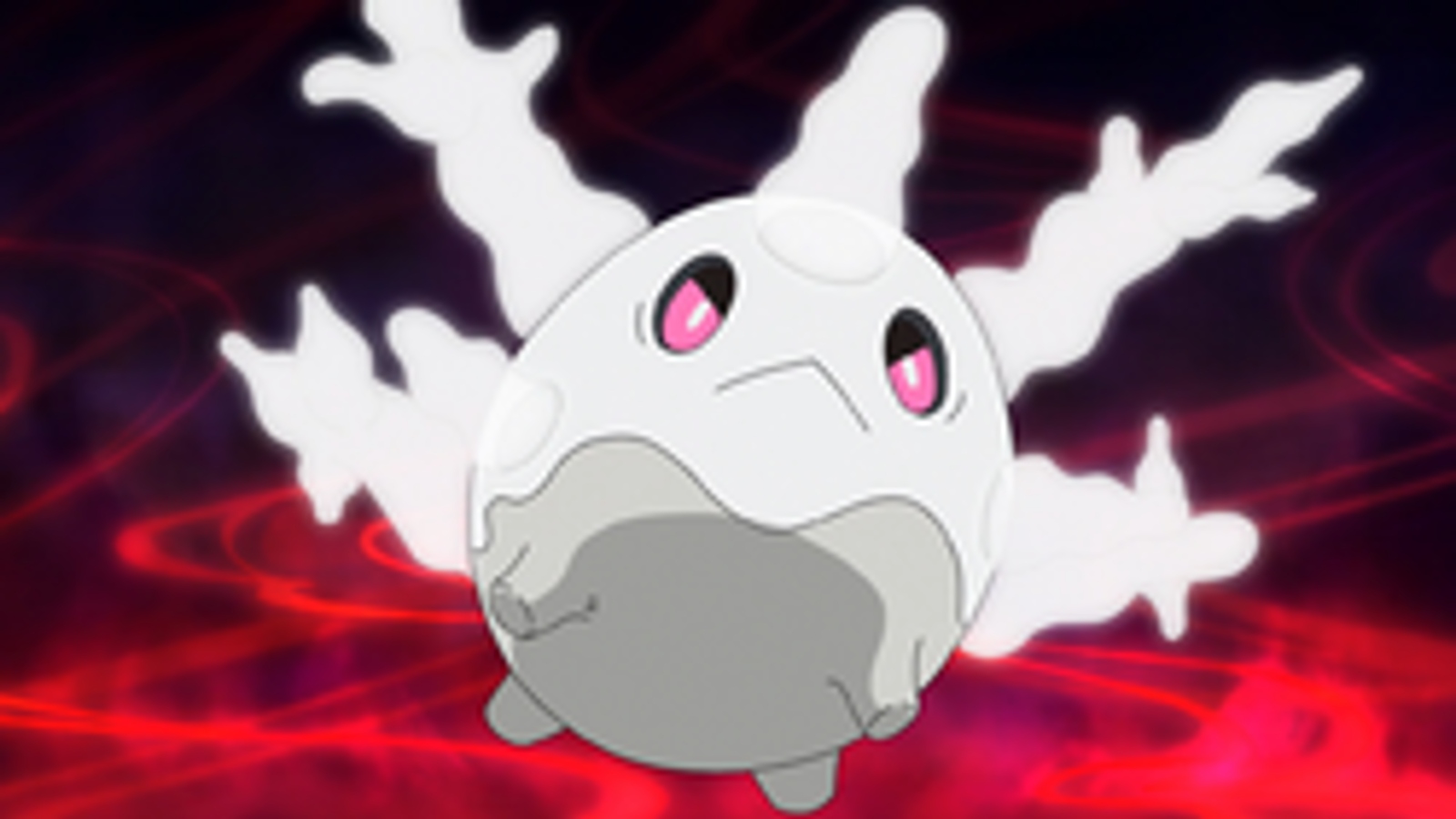
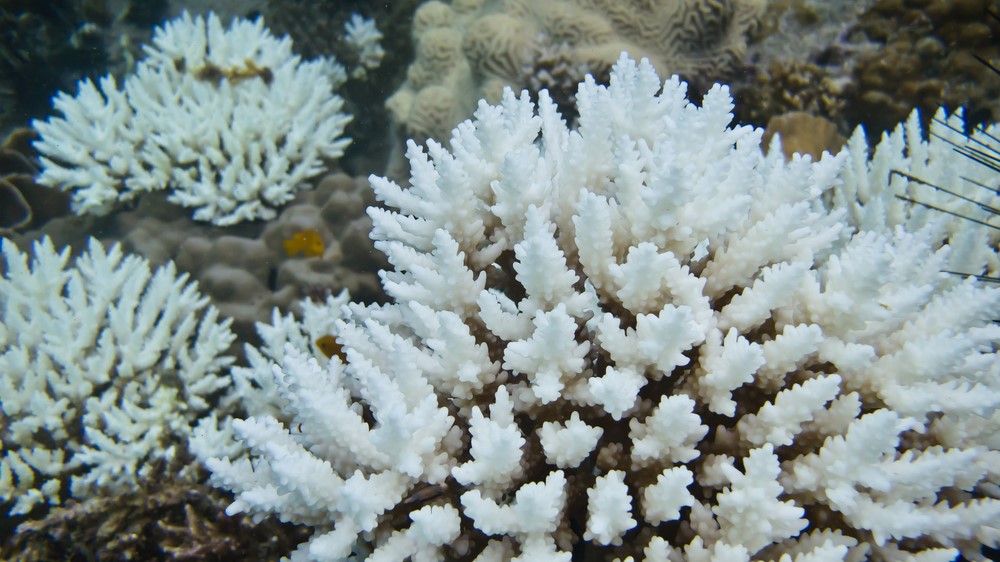
Corsola was introduced in the Generation II games Gold and Silver and is a favorite of Ash's TV companion and the Pokémon region Kanto's in-game gym leader Misty. Corsola's design appears to be based on staghorn coral (Acropora cervicornis), a species of stony coral with cylindrical branches similar to the water-shooting limbs on Corsola's back. Staghorn corals are normally yellow, but they can also appear more pinkish, like Corsola. (And yes, corals are colonial animals, not plants, so they're fair game for this list.)
Stony corals such as staghorn coral excrete calcium carbonate, also known as limestone, to form a hard exoskeleton that gives them their rocky appearance. Fittingly, Corsola is, therefore, a dual water- and rock-type Pokémon. In the TV show, Corsolas are often shown in social groups that join together to form large structures inhabited by other water Pokémon. This is similar to how multiple coral colonies join together to form coral reefs, which are the ocean's most productive and diverse habitats. In the Pokémon region Hoenn, a floating wooden village known as Pacifidlog Town is actually built on top of one of these "Corsola reefs."
In the Generation VIII games, Sword and Shield, a new Galarian version of Corsola was introduced. This version is all white with a miserable expression on its face and is a ghost type instead of a water and rock type. In the games it is revealed that Corsola has suffered from the real-world coral disease known as coral bleaching, a phenomenon in which corals' photosynthetic algal symbionts are expelled due to rising ocean temperatures caused by climate change. Bleaching leaves the corals colorless and often kills them. Staghorn coral is one of the many coral species that have been majorly impacted by coral bleaching, and it is currently listed as critically endangered, according to the IUCN Red List.
Terrakion is a takin
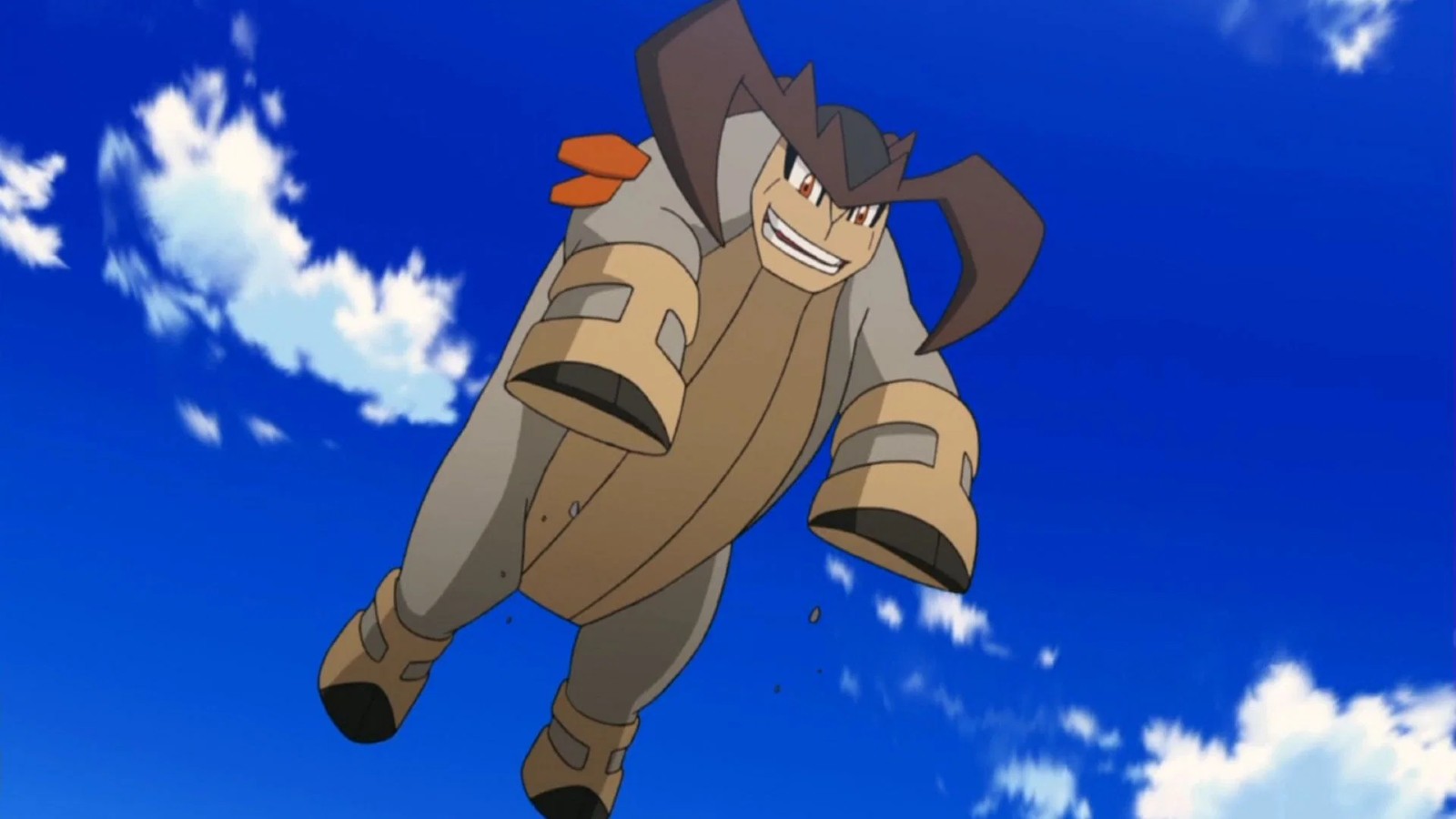
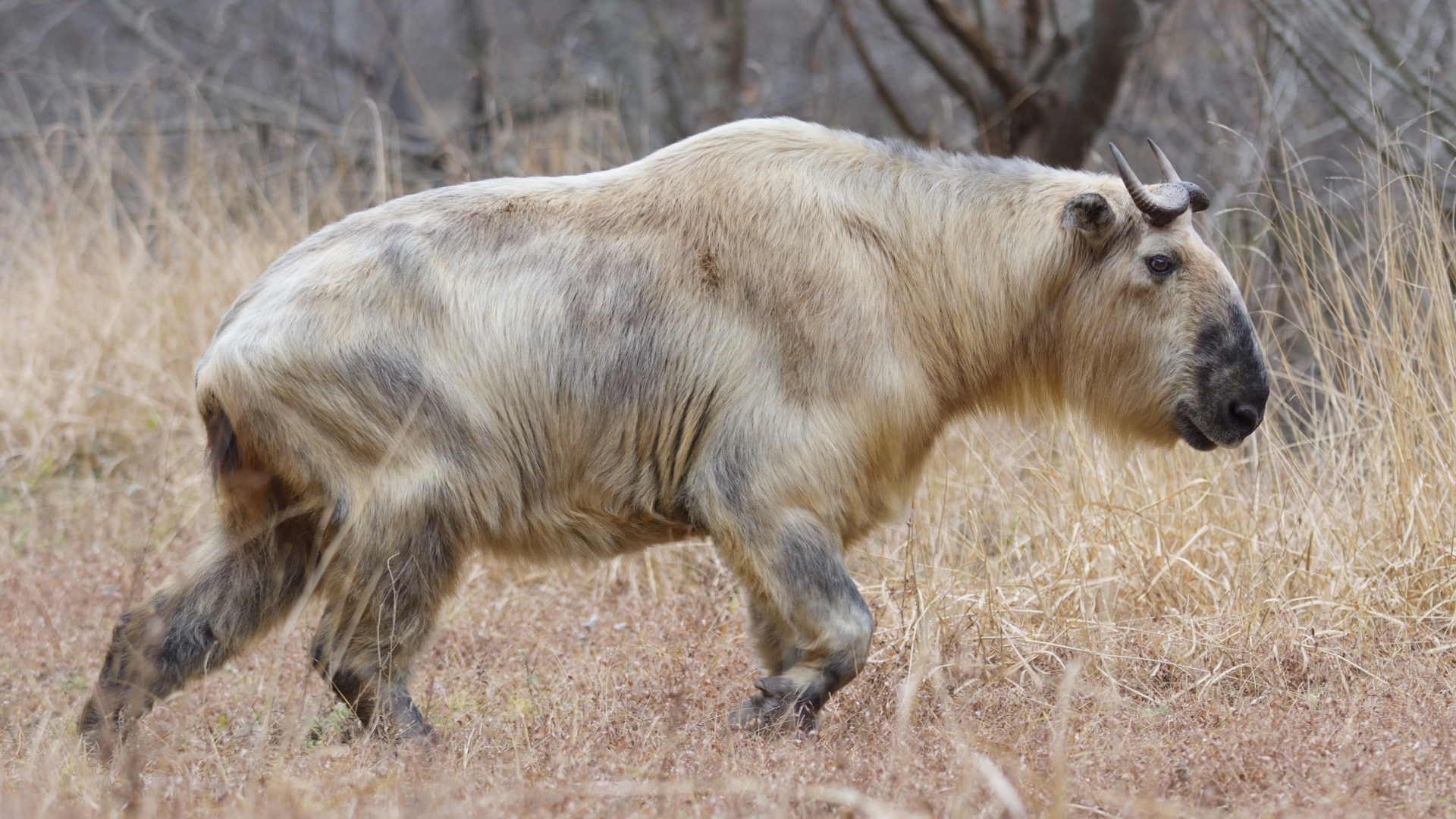
Terrakion is a legendary Pokémon introduced in the Generation V games Black and White. Its animal doppelgänger is a takin (Budorcas taxicolor), a powerfully built mammal that looks similar to a musk ox but is more closely related to a wild sheep, according to The Nature Conservancy. Takins roam the eastern Himalayas of Bhutan, China, Tibet, India and Myanmar up to 13,000 feet (4,000 meters) above sea level.
Terrakion and takins are both powerfully built quadrupeds with a similar body shape. The dual rock- and fighting-type Terrakion weighs 573 pounds (260 kilograms), according to the Pokémon website. Takins also weigh hundreds of pounds, with the heaviest tipping the scales at more than 770 pounds (350 kg). The two creatures also have similar names, and Terrakion's shiny form (extremely rare versions of Pokémon with an altered color) is gold, like the coat of some takins.
There's only one Terrakion in each game the Pokémon appears in. Takins aren't quite as rare as their fictional counterparts, but the species is vulnerable to extinction and threatened by human activities such as hunting and deforestation, according to the IUCN.
Remoraid is a remora (and also an archerfish)
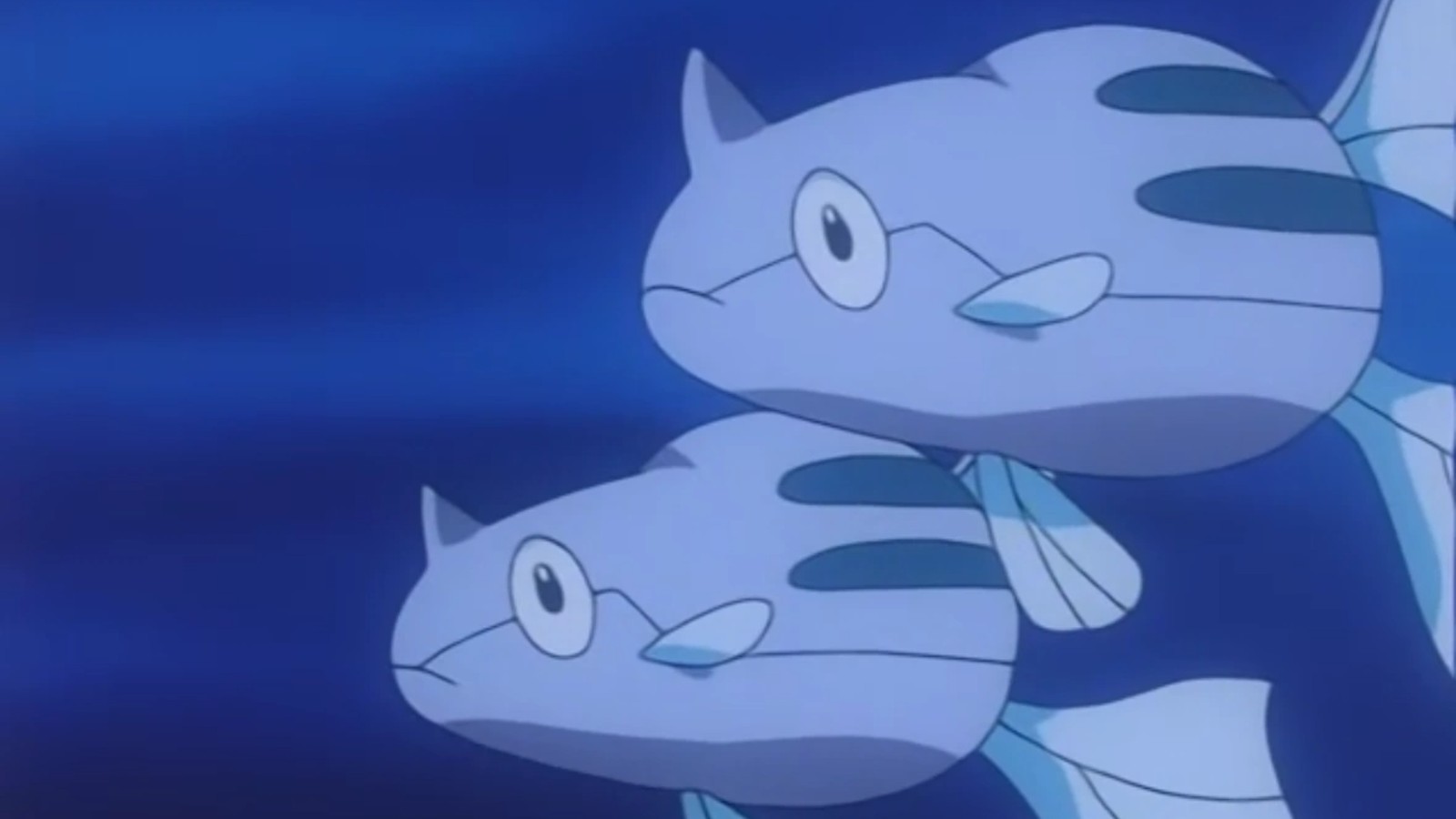
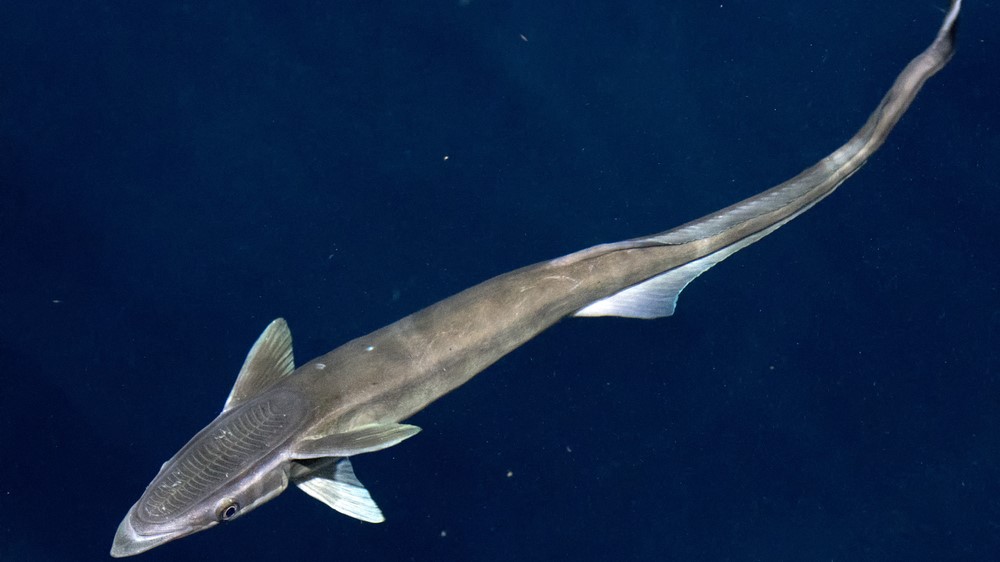
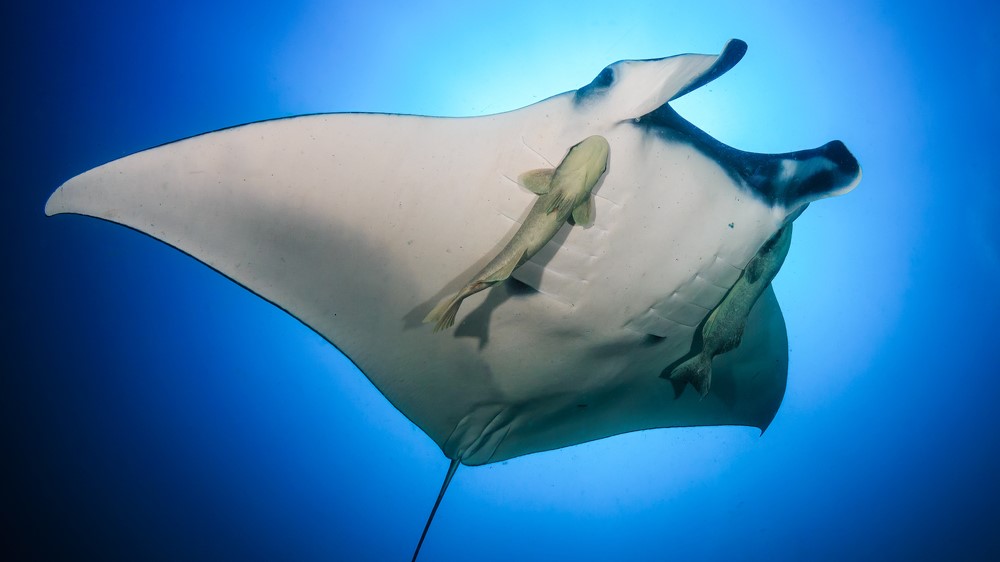
Remoraid is a water-type Pokémon first introduced in the Generation II games. It is an unusual addition to this list because it is actually remarkably similar to two completely different families of fish, remoras (Echeneidae) and archerfish (Toxotidae).
Remoras are eel-like fish with modified dorsal fins that act as suction cups on the tops of their heads. The fish use these sticky disks, which have inspired grippy robots, to attach themselves to sharks and rays and hitchhike around the oceans, thus limiting their energy output and feeding off scraps left by their hosts. Remoraid has a similar body shape to remoras' but lacks the suction cup forehead.
However, it does have a similar symbiotic relationship with the ray Pokémon Mantyke and Mantine. In the games, when Mantyke levels up with a Remoraid in the same party (a group of up to six Pokémon carried by a trainer into battles), it evolves into Mantine, which is a larger version of Mantyke with a Remoraid permanently attached under its wing. But without a Remoraid present, it cannot evolve.
Archerfish are a group of freshwater fish that shoot water at insects, spiders and even small lizards on low-hanging leaves. This causes them to fall off their perches and into the water, where they are gobbled up by the deadeye fish. Archerfish have remarkably good aim and can hit their targets from up to 6.5 feet (2 m) away, Live Science previously reported. Remoraid hunts the bug-type Pokémon Burmy, which is covered with leaves, using a similar strategy. However, unlike its real-life doppelgänger, the fictional Remoraid is supposedly capable of hitting its target from 300 feet (91.5 m) away, earning it the nickname the "sniper of the seas."
Remoraid has one other scientifically implausible trait. When leveled up, it evolves into Octillery, a Pokémon that clearly resembles an octopus. Apart from both living in the sea, there is not a lot that connects the two groups of animals, which makes Remoraid's evolutionary chain one of the most bizarre in the entire franchise.
Wooper is a newt (and an axolotl)
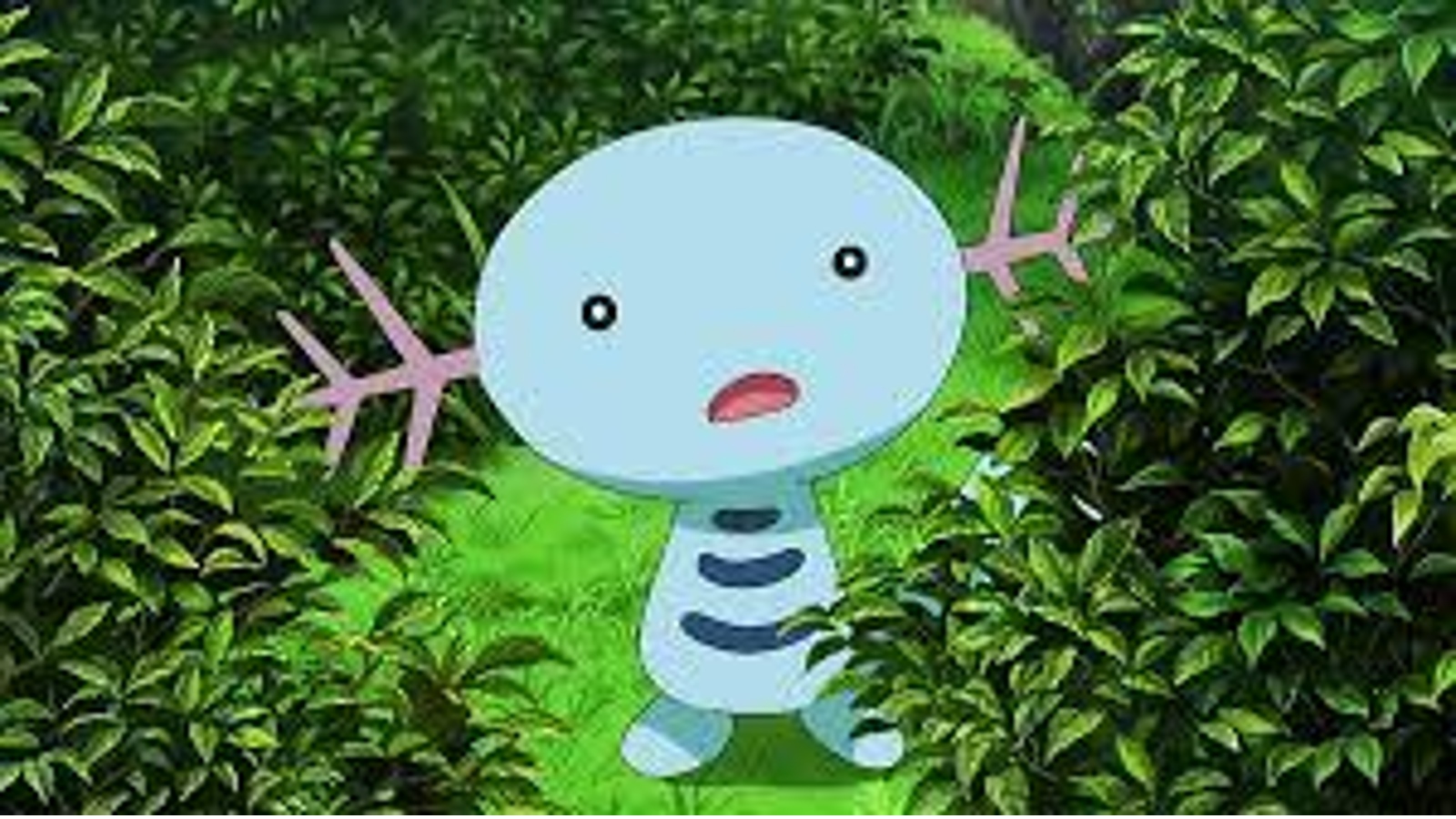
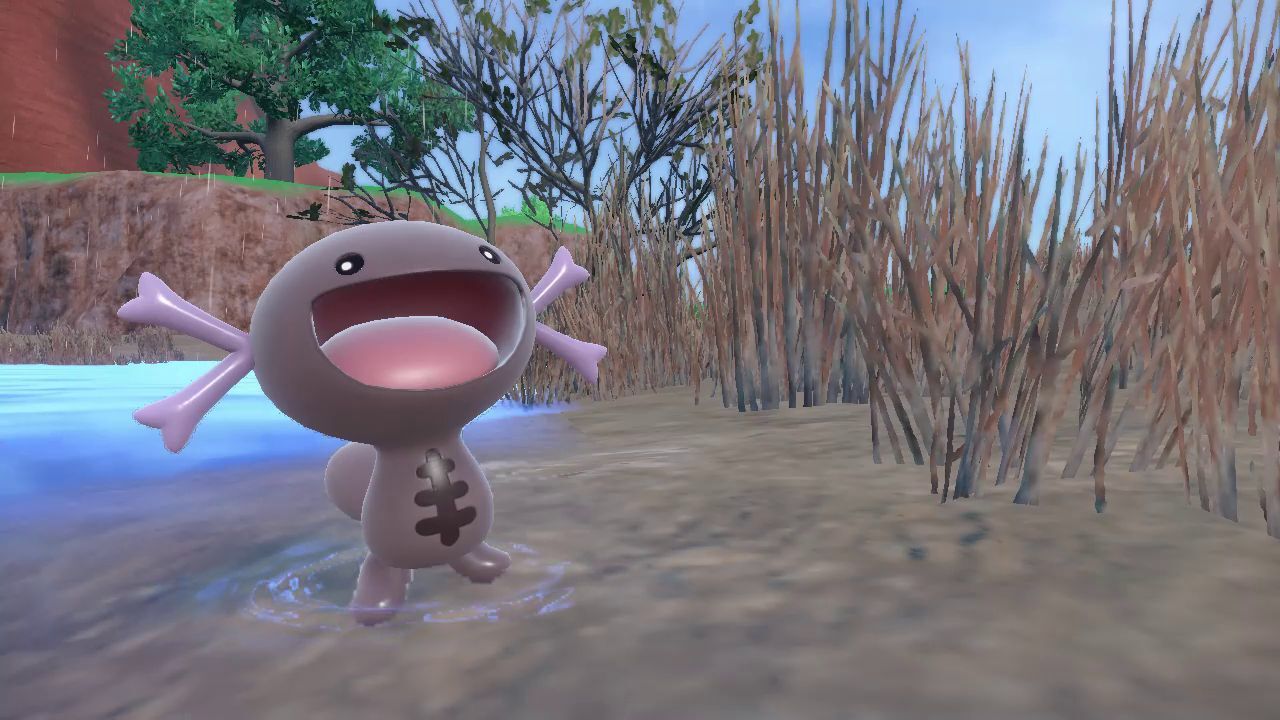
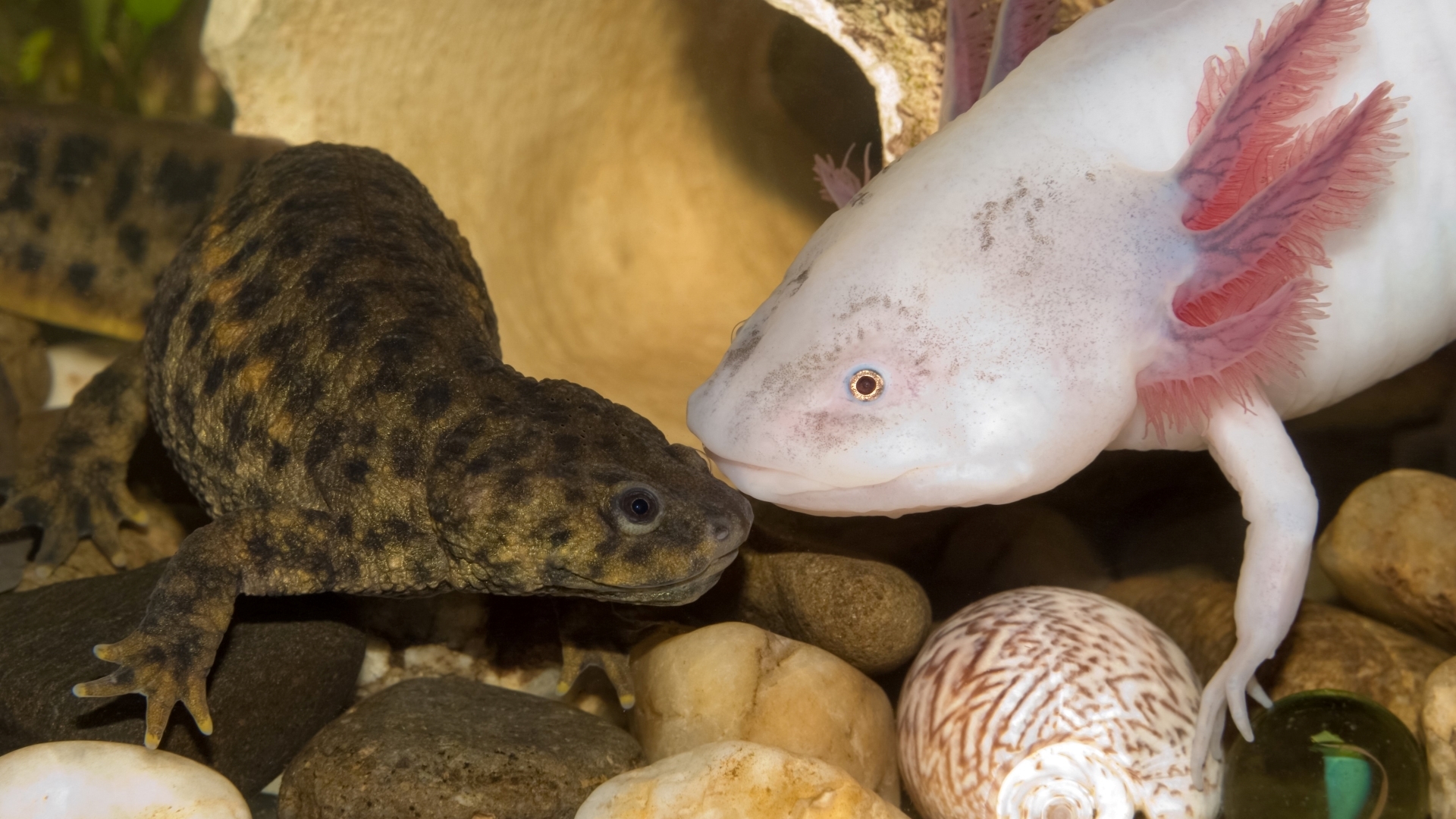
Wooper is a dual water- and ground-type Pokémon introduced in Generation II. The original Wooper could have made it onto this list on its own due to its similarities with the axolotl (Ambystoma mexicanum), an aquatic salamander with external gills on its head.
However, a new regional form of Wooper will be arriving in the upcoming video games Pokémon Scarlet and Violet. This new "Paldean Wooper" has more intriguing similarities with a type of newt; it is poison- and ground-type with the ability "Poison Point," meaning it has a chance to poison other Pokémon that make contact with it, according to the Pokémon website. It also has bones, instead of gills, sticking out of its head.
The new design is likely inspired by the Iberian ribbed newt (Pleurodeles waltl), which has a "Poison Point" of its own, GamesRadar+ previously reported. A 2010 study published in the Journal of Zoology explains that Iberian ribbed newts secrete poison and push their sharp ribs through their own skin to jab predators.
Wooper pops up across the "Pokémon" TV series, including in Season 4, Episode 12: "Beauty and the Breeder."
Pre-order Pokemon Scarlet & Violet for Nintendo Switch: Now $59.99 at Amazon
Grab the latest Pokemon release when it launches on November 18 and get your own Paldean Wooper.
Shellos is a nudibranch
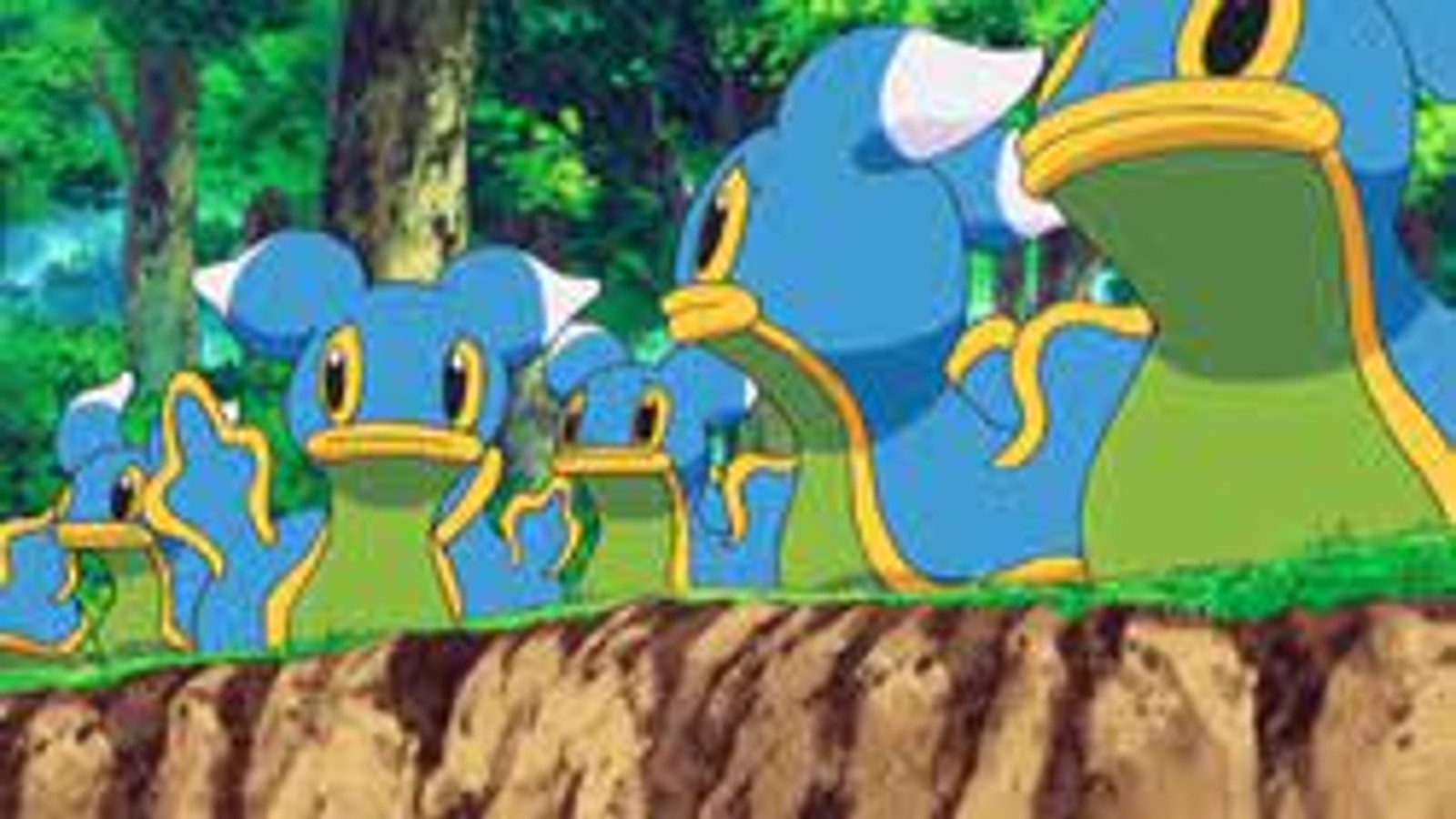
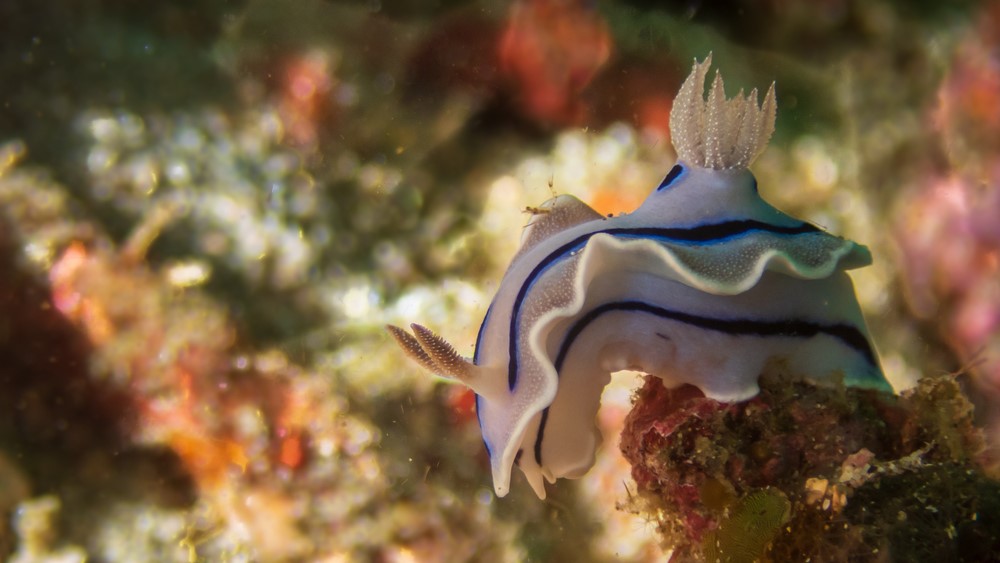
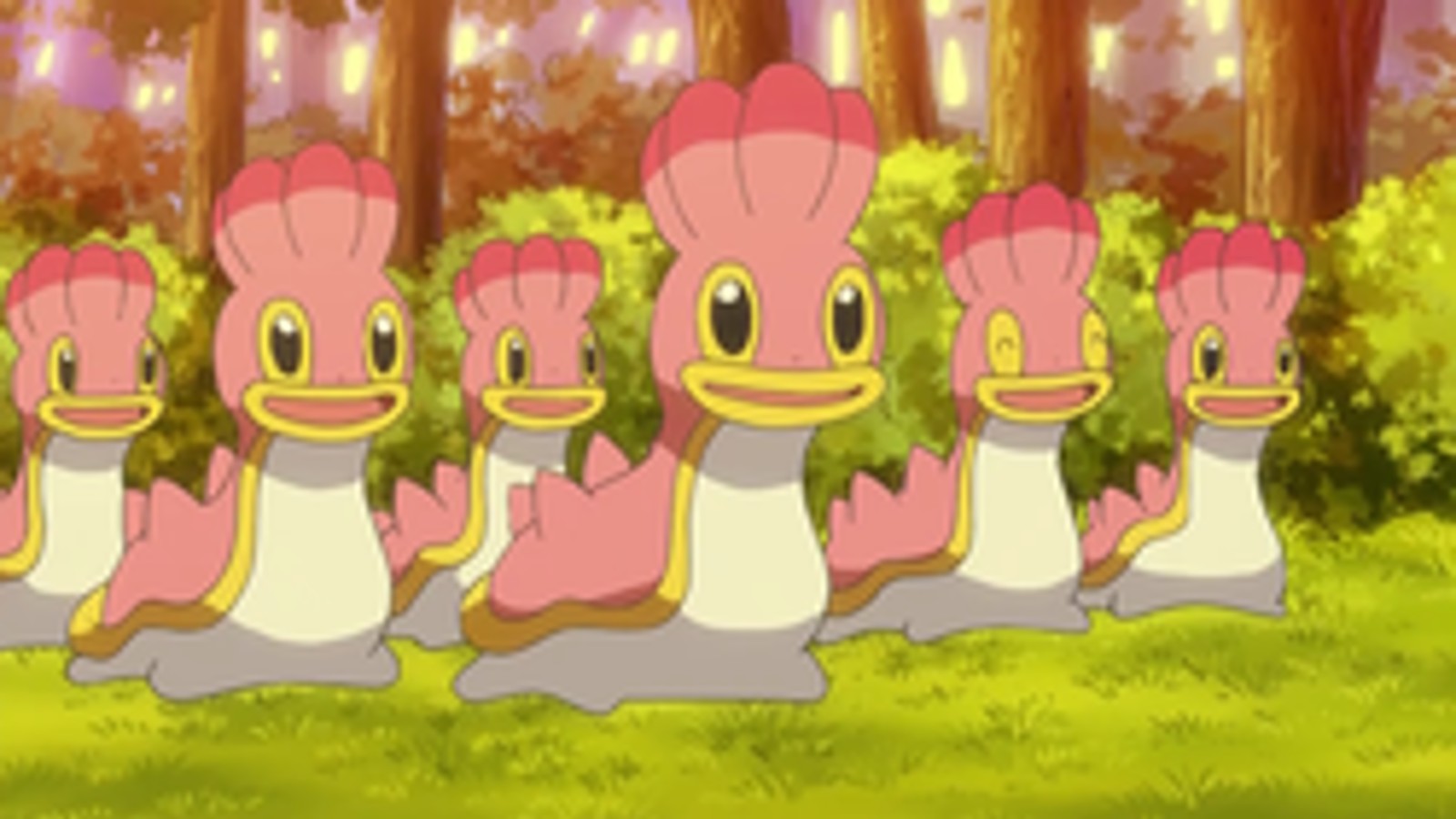
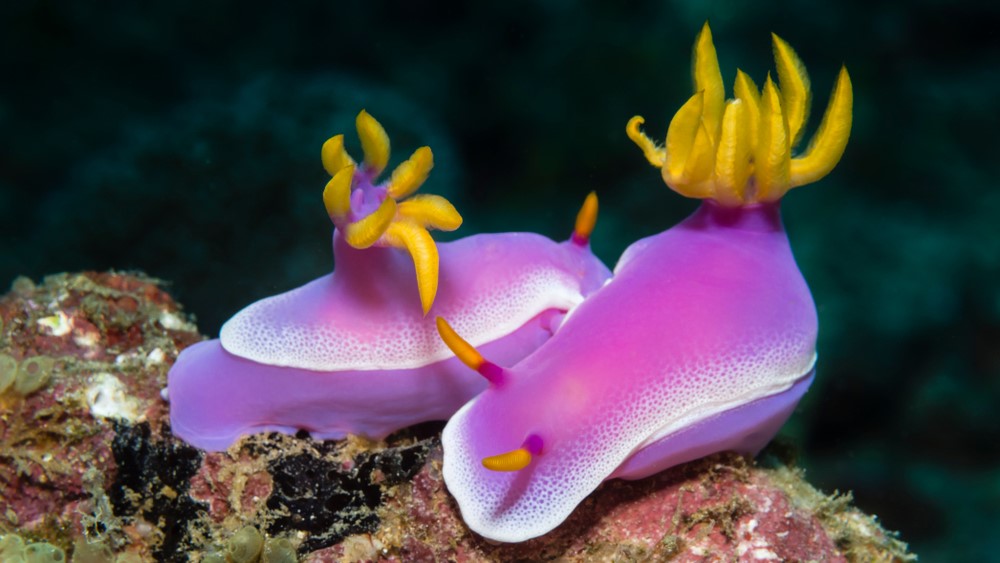
Shellos is a water-type Pokémon that was first introduced in Generation IV games Diamond and Pearl. Unusually, there are two forms of Shellos: the pink form that lives in the West Sea of the Sinnoh region, and the blue form lives in the East Sea. Though they have slightly different body shapes, both forms are believed to be based on nudibranchs, a group of more than 3,000 soft-bodied sea slugs in the order Nudibranchia.
Nudibranchs come in a wide array of colors and body shapes. The blue form of Shellos looks most similar to Loch's chromodoris (Chromodoris lochi), a blue nudibranch that has tiny horns and is found in the Indo-Pacific region. It is unclear which species of nudibranch the pink form of Shellos is based on, but it might take inspiration from a number of species.
In the TV episode "Gateway to Ruin!" it is revealed that the formation of Mt. Coronet (the mountain that splits the Sinnoh region) geographically isolated the original Shellos, causing them to evolve into different forms. In the real world, this phenomenon is known as an allopatric speciation event, and it has happened frequently in the evolutionary past of many modern-day animal and plant species, such as Darwin's finches in the Gallapagos Islands.
Honorable mentions
Here are a few more surprising Pokémon doppelgängers that deserve shoutouts.
Poliwag is a glass frog tadpole (Hyalinobatrachium orientale), down to its swirly belly (seriously, check out the images from this 2015 study).
Fennekin is a Fennec fox (Vulpes zerda) and can vent fire from its ears similar to the way this species of fox expel heat through theirs to stay cool.
Surskit is a type of water strider, a family of long-legged insects in the order Hemiptera that can skate across the tops of ponds.
Durant is a trap jaw ant, from the genus Odontomachus, that in real life is capable of biting at lightning-fast speeds of 120 mph (193 km/h).
Joltik is a four-legged version of a jumping spider, from the family Salticidae, that likely gets its electric type thanks to recent discoveries about how spiders use electricity to fly by ballooning their silk.
Bruxish is a reef triggerfish (Rhinecanthus rectangulus), also known as humuhumunukunukuāpuaʻa, which is the Hawaii state fish.
Dubwool is a Scottish Hebridean sheep or a Jacob sheep, two breeds of sheep that have four horns just like the Pokémon.
Clauncher is a pistol shrimp, from the family Alpheidae, which has one oversize claw just like the water-type Pokémon. Clauncher's bright-blue color is also likely inspired by blue crayfish (Procambarus alleni).
Originally published on Live Science.
Sign up for the Live Science daily newsletter now
Get the world’s most fascinating discoveries delivered straight to your inbox.

Harry is a U.K.-based senior staff writer at Live Science. He studied marine biology at the University of Exeter before training to become a journalist. He covers a wide range of topics including space exploration, planetary science, space weather, climate change, animal behavior and paleontology. His recent work on the solar maximum won "best space submission" at the 2024 Aerospace Media Awards and was shortlisted in the "top scoop" category at the NCTJ Awards for Excellence in 2023. He also writes Live Science's weekly Earth from space series.
